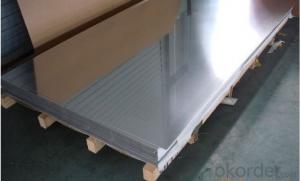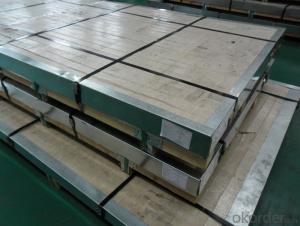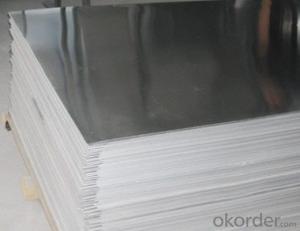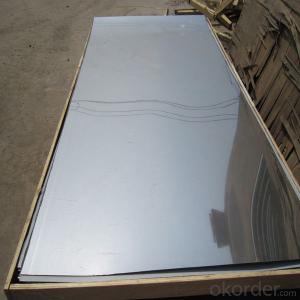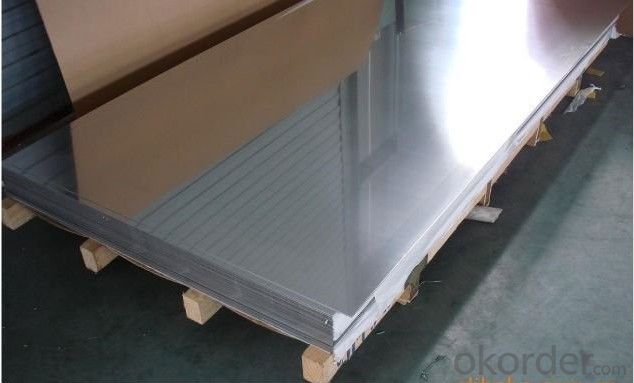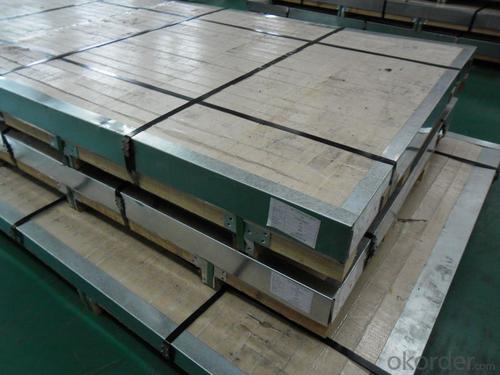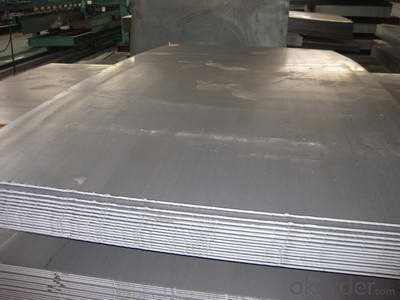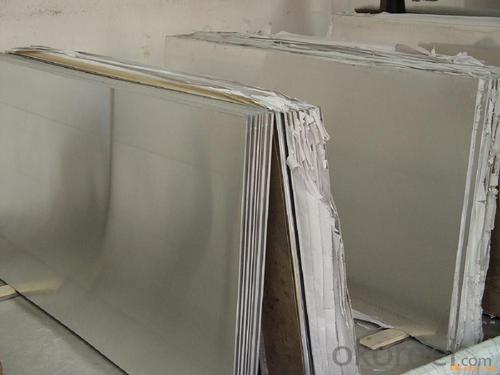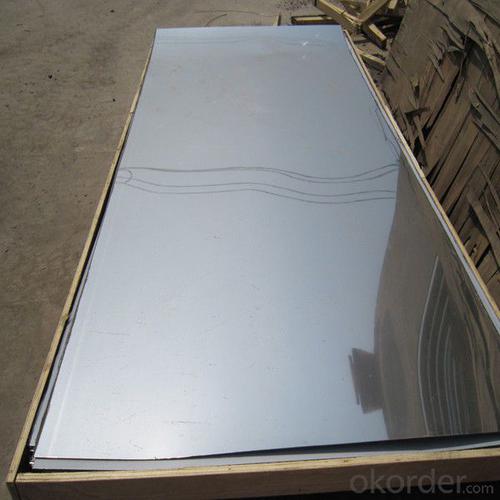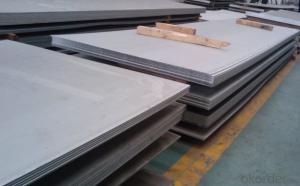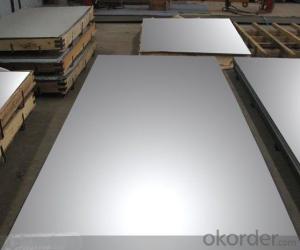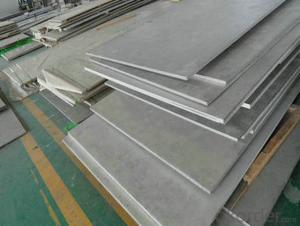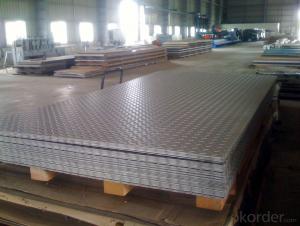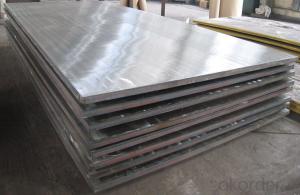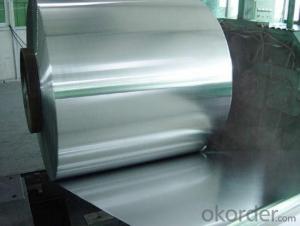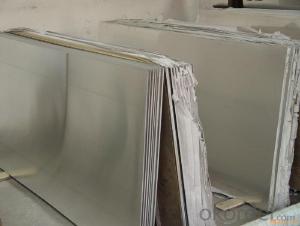Stainless Steel sheet 316Ti with No.4 Surface Treatment
- Loading Port:
- Shanghai
- Payment Terms:
- TT OR LC
- Min Order Qty:
- 500 m.t.
- Supply Capability:
- 5000000 m.t./month
OKorder Service Pledge
OKorder Financial Service
You Might Also Like
Hot sale stainless steel sheet 201/202/304/304l/310S/309S/316L/316Ti/316/321,410/420/430/444/443/409L, and 904L.
Description of Stainless Steel Sheet:
Description | steel sheet,hot rolled steel sheet,cold rolled steel sheet, steel sheet,sheet,steel plate |
Standard | ASME, ASTM, EN ,BS,GB,DIN, JIS etc |
Application | Steel sheet applies to construction field, ships building industry, petroleum & chemical industries, war and electricity industries, food processing and medical industry, boiler heat exchanger, machinery and hardware fields. |
Packaging | Standard export sea-worthy packing |
Delivery time | 10-30 days |
Quality | No.1 |
Productivity | 500 tons/Day |
Note | Our company has cooperative relation between the domestic agents. Stainless steel sheet can be made accordingto the customers requirements. Fasten delivery. Quality assured. |
Contacts | If you have any question,please feel free contact me. |
Stainless steel sheet surface finish characteristics
Surface finish | Characteristics and application |
2B | The surface brightness and flatness of no2B is better than no2D. then through a special surface treatment to improve its mechanical properties,No2B could nearly satisfy comprehensive uses. |
No.1 | Polished with abrasive belt of grit#100-#200, have better brightness with discontinuous coarse stria, used as inner and external ornaments for building, electrical appliances and kitchen utensils etc. |
No.4 | Polished with abrasive belt of grit #150-#180,have better brightness with discontinuous coarse stria, but thinner than No3, are used as bathtub buildings inner and external ornaments electrical appliances kitchen utensils and food processing equipment etc. |
HL | Polished with abrasive belt of grit #150-#320 on the NO.4 finish and has continuous streaks, mainly used as buildings ornaments elevators, door of building, frontal plate etc. |
BA | Cold rolled, bright annealed and skin-passed, the product have excellent brightness and good reflexivity like mirror, kitchen apparatus, ornament etc. |
8K | The product have excellent brightness and prefer reflexivity can to be the mirror. |
Main Features of stainless steel sheet :
•Escalator, Elevator, Doors
•Furniture
•Production tools, Kitchen appliances, freezers, cold rooms
•Auto Parts
•Machinery and Packaging
•Equipment and Medical devices
•Transport system
Product Details:
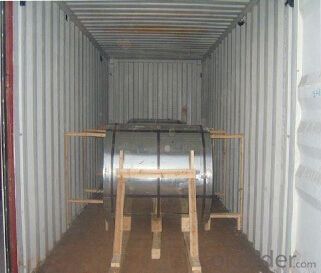
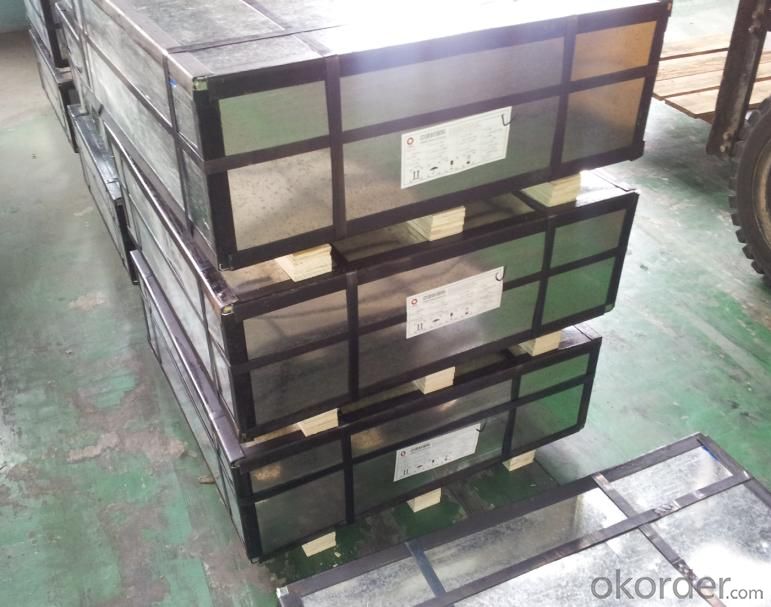
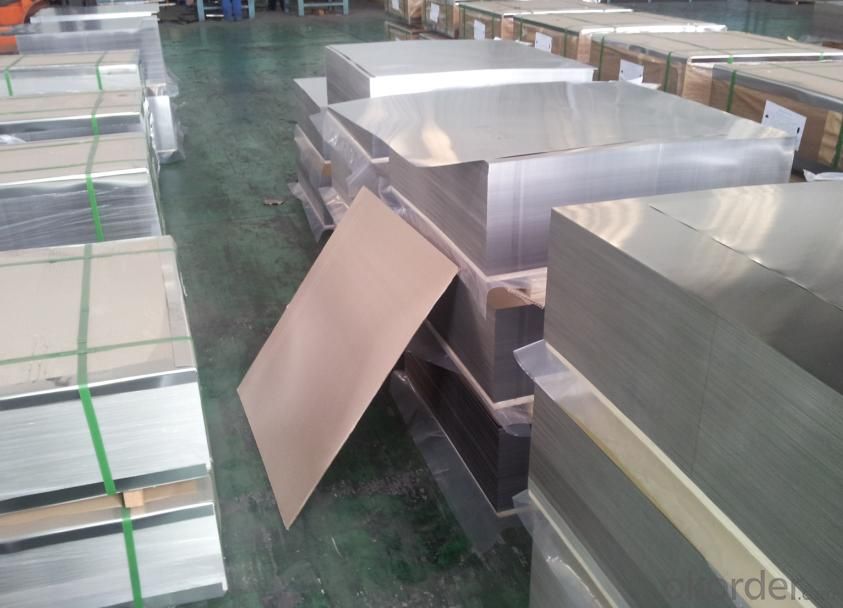
Sandard Seaworth Packing(wooden packing with water proof paper)
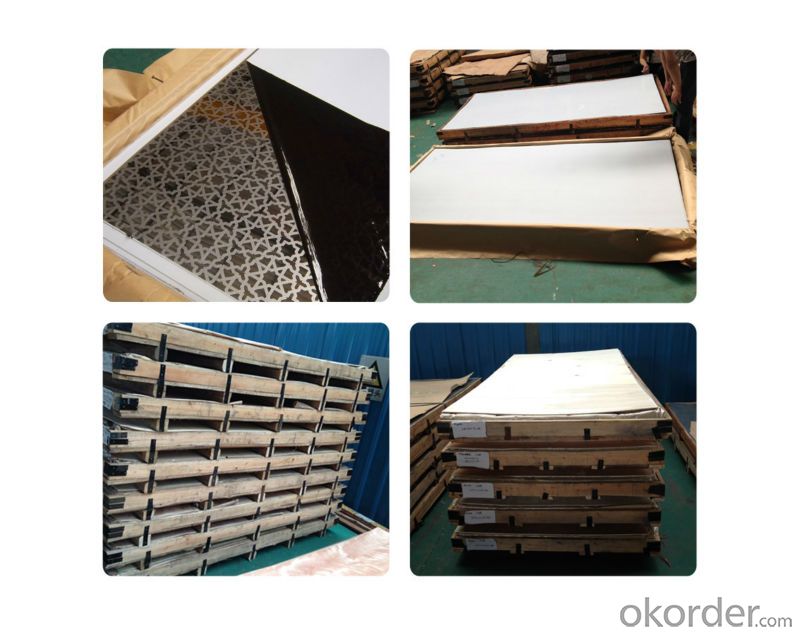
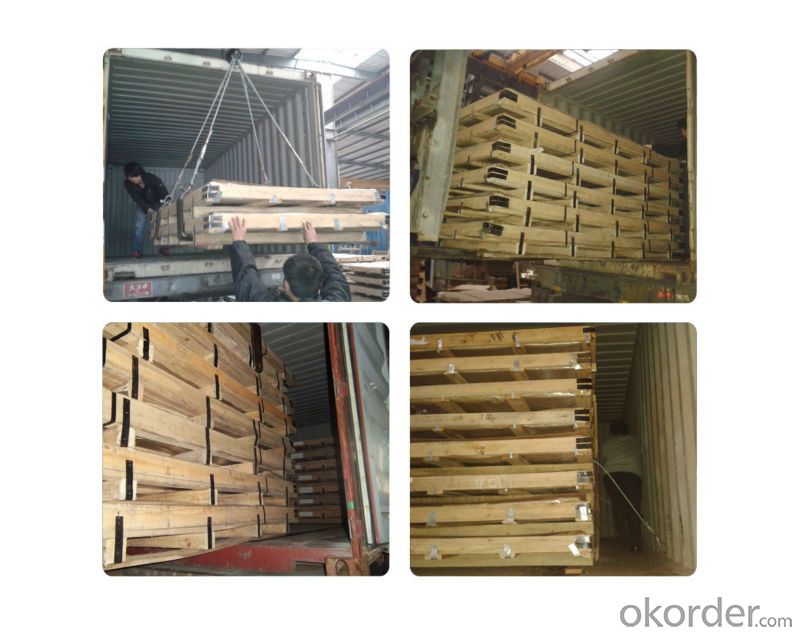
FAQ:
1. What's the quality?
very fine
2. How long get reply?
within 24 hours
If you have any question about stainless steel sheets,donot forget to sending the email to Us! You will get the competitive Price and have a very good experience about the Buying Process! CNBM International Corporation is always your trustful friend!
- Q: Can stainless steel sheets be used for mezzanine flooring?
- Yes, stainless steel sheets can be used for mezzanine flooring. Stainless steel is a durable and corrosion-resistant material, making it suitable for various applications including flooring. It has high strength and can withstand heavy loads, making it ideal for mezzanine structures. Additionally, stainless steel sheets can be easily cleaned and maintained, ensuring a hygienic and aesthetically pleasing flooring option.
- Q: Can stainless steel sheets be used for elevator panels?
- Yes, stainless steel sheets can be used for elevator panels. Stainless steel is a durable and corrosion-resistant material, making it suitable for high-traffic areas like elevators. It offers a sleek and modern aesthetic, making it a popular choice for elevator panels in commercial and residential buildings.
- Q: Can stainless steel sheets be cut or shaped easily?
- Yes, stainless steel sheets can be cut or shaped easily. Stainless steel is known for its excellent machinability and workability, making it relatively easy to cut, shape, and form into desired shapes or sizes with the right tools and techniques.
- Q: Are stainless steel sheets suitable for medical equipment?
- Yes, stainless steel sheets are highly suitable for medical equipment. They possess excellent characteristics such as corrosion resistance, durability, and ease of cleaning, making them ideal for medical environments where cleanliness and hygiene are crucial. Stainless steel's non-porous surface also helps prevent the growth of bacteria, making it a safe and hygienic choice for medical equipment manufacturing.
- Q: Are stainless steel sheets suitable for water treatment applications?
- Water treatment applications can greatly benefit from the use of stainless steel sheets. The reason for this is that stainless steel has exceptional resistance to corrosion, making it the perfect material for environments where there is a presence of water and moisture. It is able to withstand rust, staining, and pitting, guaranteeing the sheets' longevity and durability in water treatment facilities. Moreover, stainless steel sheets possess hygienic qualities. They are effortless to clean and maintain, which is especially crucial in water treatment applications where cleanliness and sanitation are of the utmost importance. Additionally, stainless steel does not react with water, meaning it does not release harmful substances into the water being treated. In addition to these benefits, stainless steel sheets exhibit strength and can tolerate high pressures and temperatures. This is highly significant in water treatment processes that involve filtration, disinfection, and other treatment methods that may require rigorous conditions. To conclude, stainless steel sheets are an outstanding option for water treatment applications due to their resistance to corrosion, hygienic properties, strength, and durability. They present a dependable and long-lasting solution for various components in water treatment facilities, including tanks, pipes, valves, and other equipment.
- Q: Can stainless steel sheets be used for elevator handrails or grab bars?
- Stainless steel sheets are indeed suitable for elevator handrails or grab bars. These applications often favor stainless steel due to its commendable durability, resistance to corrosion, and pleasing appearance. One can fashion stainless steel sheets into different forms and dimensions to meet the precise demands of elevator handrails or grab bars, guaranteeing the safety and comfort of users. Moreover, stainless steel is effortlessly cleaned and maintained, making it a logical preference for frequently-used spaces like elevators.
- Q: What kind of screws do you choose for stainless steel plates?
- If it's a fixed plate, ordinary ones will doOf course, stainless steel screws are the best
- Q: What are the benefits of using embossed stainless steel sheets?
- There are several benefits of using embossed stainless steel sheets. Firstly, embossed stainless steel sheets offer enhanced aesthetic appeal. The embossed patterns on the surface of the stainless steel sheet add a unique texture and visual interest to any space. This can help to create a more visually appealing and modern look in both residential and commercial settings. Additionally, embossed stainless steel sheets provide increased durability and strength. Stainless steel is already known for its excellent resistance to corrosion, staining, and wear. The embossing process further enhances the strength and durability of the sheets, making them suitable for high traffic areas or areas where there is a risk of damage or impact. Another benefit of using embossed stainless steel sheets is their versatility. These sheets can be used in a wide range of applications, including wall cladding, elevator panels, kitchen backsplashes, furniture, and architectural features. They can be easily cut and shaped to fit different design requirements, making them a versatile choice for various projects. Furthermore, embossed stainless steel sheets are easy to clean and maintain. The smooth surface of the embossed patterns makes it easier to wipe away dirt, grime, and fingerprints, ensuring a clean and hygienic surface. This is especially beneficial in areas where cleanliness is a priority, such as kitchens or healthcare facilities. Lastly, embossed stainless steel sheets are environmentally friendly. Stainless steel is a highly sustainable material as it is 100% recyclable, and the embossing process does not generate any waste or harmful byproducts. This makes embossed stainless steel sheets an eco-friendly choice for those looking to reduce their carbon footprint and contribute to a greener environment. In conclusion, the benefits of using embossed stainless steel sheets include enhanced aesthetic appeal, increased durability and strength, versatility in applications, easy maintenance, and eco-friendliness. These sheets are a great choice for those seeking a durable, stylish, and sustainable material for their projects.
- Q: Can stainless steel sheets be used for elevator cladding?
- Indeed, elevator cladding can make use of stainless steel sheets. Stainless steel proves to be a favored material for this purpose as it possesses qualities of endurance, resistance to corrosion, and an aesthetically pleasing appearance. Architects and designers often favor stainless steel for elevators due to its ability to provide a sleek and contemporary look. Various finishes, including brushed, mirrored, or patterned, are available for stainless steel sheets, offering customization and design flexibility. Moreover, stainless steel is easily cleaned and maintained, making it a practical choice for high-traffic areas like elevators. In summary, stainless steel sheets present a durable and visually appealing solution for elevator cladding.
- Q: What are the different types of patterned finishes available for stainless steel sheets?
- There are several types of patterned finishes available for stainless steel sheets, including embossed, textured, perforated, brushed, and hammered finishes. Each of these finishes offers a unique aesthetic appeal and texture to the stainless steel, allowing for versatile applications in various industries such as architecture, interior design, and automotive.
Send your message to us
Stainless Steel sheet 316Ti with No.4 Surface Treatment
- Loading Port:
- Shanghai
- Payment Terms:
- TT OR LC
- Min Order Qty:
- 500 m.t.
- Supply Capability:
- 5000000 m.t./month
OKorder Service Pledge
OKorder Financial Service
Similar products
Hot products
Hot Searches
Related keywords
